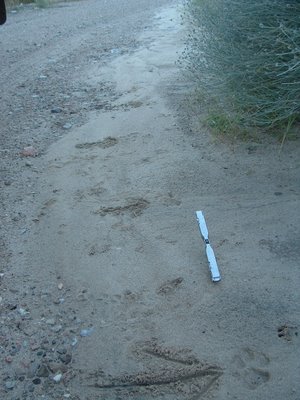
Once back at our starting point we were further confounded by the continued absence of any signal from #21. Either the collar had stopped transmitting, perhaps due to battery failure, or our dead sheep had left the canyon. Another possibility, we thought unlikely, was that the cougar in its normal kill caching behavior, had buried the collar in such a way as to dampen the signal transmission. We decided the best option at this late time of day, was to drive to the top of the range, and from this high vantage point (see photo above) attempt to locate the signal. We drove the very bumpy miles to the top of the range to be met with silence on our radio receiver once again. We hiked and searched these canyon rims until sunset, but to no avail. Number 21 was simply gone.
























